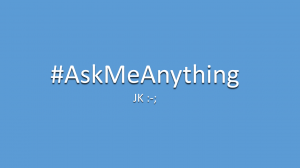One of the most admirable traits of a brand is transparency- what you see is what you get. And, a transparent brand is one that acknowledges its flaws. Rather than pursuing an impossible quest to project perfection (e.g., the dramatic collapse of the personal brands of Lance Armstrong and Tiger Woods), transparent brands own up to mistakes, accept responsibility for them, and commit to doing better. These behaviors build trust and confidence in the brands that exhibit them.
Given the benefits of transparency, the concept of brands engaging the public in social channels for Q&A sessions would seem to be a valuable engagement tactic. Give people a forum for sharing what is on their mind, and deliver candid responses- nothing can go wrong, right? Of course it can, and it has. Twitter’s Q&A format gives a brand access to people who care about the brand… as well as those who have had bad experiences or hold negative views. However, recent Q&A sessions held by the NFL, NCAA, and NYPD did not go exactly as planned as participants called out questionable practices of these brands. But at least their Q&A sessions got off the ground before crashing; JP Morgan cancelled a Q&A session last fall when an invitation to submit questions and comments ahead of the session led to a deluge of responses that pointed to disaster if JP Morgan went through with the Q&A.
Don’t Play Unless You Have Thick Skin
Holding a Twitter Q&A, a Reddit Ask Me Anything (AMA), or some other interactive exchange with customers and other stakeholders represents a huge gamble for many big brands. Why? In these settings, a brand must cede control of the conversation to the audience it wishes to engage. This fact is difficult for many brands to embrace because they obsess over maintaining control over the tone and content of communication (I can’t even call it conversation as most brand-initiated communication is one-way broadcasting to a target audience). The prospect of looking bad or out of touch with the very audience targeted for engagement is a risk that many brands are unwilling to take.
The takeaway from the missteps of brands that have failed with live engagement on social media is perhaps best summed up by digital strategist and blogger B.L. Ochman when she said “If you don’t want to get trashed in social media, don’t treat people like trash in the real world.” Brands need to be transparent and authentic, not just for an hour during an online Q&A, but in their everyday dealings with customers and communication with stakeholders. If not, no need to waste time pretending you care about what is the mind of others by hosting a Q&A. Being transparent does not mean you will be immune from criticism or negative feedback, but you will be better prepared to deal with negative communication, appropriately respond to it, and build trust with your audience.

